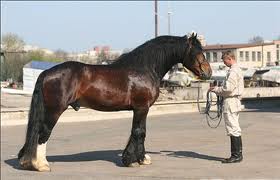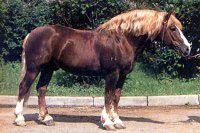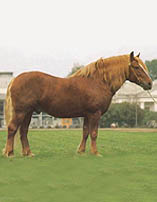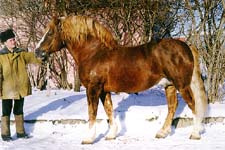



|
Russian Heavy Draft Qualities
The Russian Heavy Draft horses are from Ukraine and Russia alike. They are used for light draft work, harness work, and agriculture needs as well. They can be found in the Russian Federation in more detailed areas such as Kiev, Khrenov, Derkul, and other parts just around the Black Sea. They can be seen still to this day pulling farm carts and other goods for their cherished owners.
Russian Heavy Draft Temperament
The Russian Heavy Draft horses have a gentle and willing persona. They can usually be found on farms teaching children how to ride with ease with a high level of calmness. The breed is easy to begin training and can be trusted as well. They do not fight and do very well with other horses and animals.
Russian Heavy Draft Appearance
The Russian Heavy Draft horses stand at around fourteen hands when fully grown. They have a refined head, a medium neck, deep chest, low withers, a long back, shorter legs, and a sloping croup. Their backs are long and their forelegs are set very far apart. The breed has a light feather and regular sized feet.
Russian Heavy Draft Upkeep
The Russian Heavy Draft breed is minimal to take care of. They are sweet, gentle, and can be left alone and care for themselves at times. This breed can roam for hours unattended and can also live in either cold or warm climates. This style of horse does not have any reported medical issues on file and can live a very long and productive life.
Russian Heavy Draft History
The Russian Heavy Draft horse originated from the lands of Russia and Ukraine. They are considered to be a younger style of horses, one that began back in the middle of the eighteen hundreds. The state studs were noted as Khrenov and Derkul and were mated with local mares, as well as the Ardennes breeds. The Russian Heavy Draft was once even used in the Paris Exhibition in 1900. In very little time at all, the breed was introduced to newer blood lines, such as the Brabant, Percheron, and the famous Orlov Trotter. The breed went on to be virtually extinct once the first World War was over, and then again following the Russian Civil War. Used for agricultural and lighter draft work, they continued to expand the breed. The style went on to be used to create a fermented drink that was called “kumys”. Experts say it was a great drink tonic and used by many people during the nineteenth century.
|